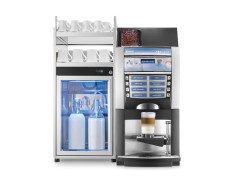When it comes to protecting assets and lives from the threat of fire, various suppression systems are available, each with its unique characteristics and advantages. Here, we’ll compare FM 200 suppression system with other commonly used fire suppression systems to understand their differences and suitability for different applications.
FM 200:
FM 200, also known as HFC-227ea, is a clean agent fire suppression system that extinguishes fires by removing heat and interrupting the chemical chain reaction. It is non-toxic, colorless, and electrically non-conductive, making it suitable for protecting sensitive equipment and occupied spaces.
Water- based systems:
Water-based systems, such as sprinklers, are traditional fire suppression methods. While effective, they can cause extensive water damage to property and are not suitable for environments with electrical equipment due to the risk of electrocution.
CO2 systems:
Carbon dioxide (CO2) systems work by displacing oxygen, suffocating the fire. They are commonly used in areas where water-based systems are impractical, such as server rooms. However, CO2 can be harmful to humans in high concentrations and poses a risk of asphyxiation.
Halon systems:
Halon systems were once widely used but are now being phased out due to their ozone-depleting properties. They are effective in suppressing fires, but their environmental impact has led to the development of more sustainable alternatives like FM 200.
Advantages of FM 200:
- Environmental friendliness: Unlike halon, FM 200 does not deplete the ozone layer, making it a more sustainable choice.
- Safety: FM 200 is non-toxic and safe for occupied spaces, minimizing health risks for occupants during discharge.
- Fast suppression: It extinguishes fires quickly, reducing damage to property and critical infrastructure.
Limitations of FM 200:
- Limited application: FM 200 is not suitable for Class D fires (combustible metals) and may require additional systems in environments with diverse fire risks.
- High cost: Initial installation and maintenance costs for FM 200 systems can be higher compared to traditional systems like water-based sprinklers.
FM 200 offers a compelling alternative to traditional fire suppression systems, providing rapid and effective fire protection while minimizing environmental impact and health risks. However, its suitability depends on the specific requirements and hazards of the protected environment. Understanding the strengths and limitations of FM 200 in comparison to other systems is crucial for making informed decisions regarding fire safety measures.


